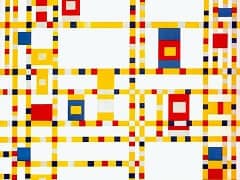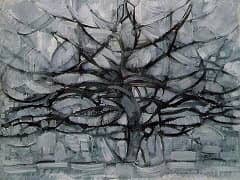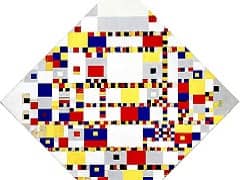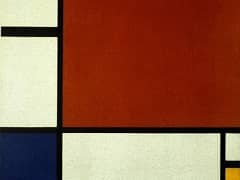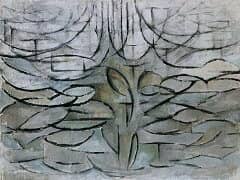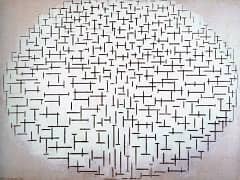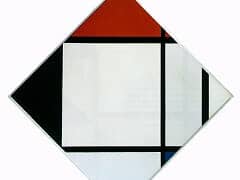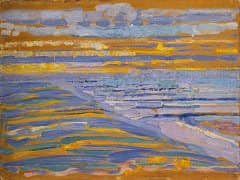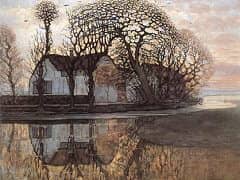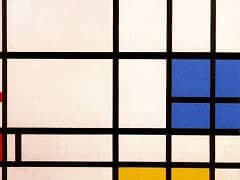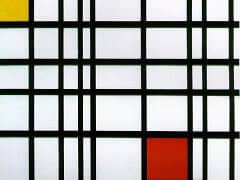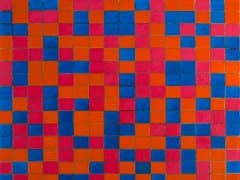Tableau No. IV: Lozenge Composition with Red, Gray, Blue, Yellow, and Black by Piet Mondrian
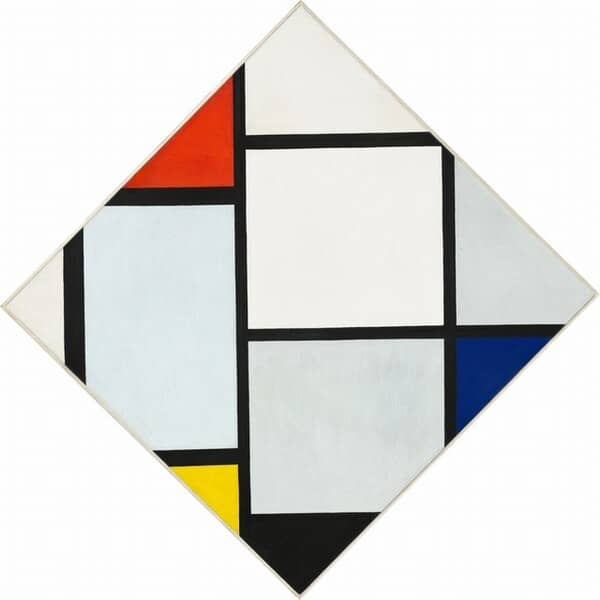
It is noteworthy that the roots of modern Expressionism can be traced to a Dutch artist, Vincent van Gogh, and that the opposite stylistic trend, coldly intellectual and purely optical, can be traced to Piet Mondrian. Tableau No. IV: Lozenge Composition with Red, Gray, Blue, Yellow, and Black is one of sixteen paintings by Mondrian that are square and stand on one corner. The first was done in 1918, but most were painted in 1925 and 1926. He returned to this compositional pattern at the end of his life with Victory Boogie-Woogie, which he was working on when he died.
Mondrian's abstractions are exercises in optical balance. Around an imaginary center the primary colors, blue, red, and yellow, to which he limited his palette, are carefully equalized in their placing, value, intensity, and amount. Thus the eye is drawn equally over the whole of the picture's surface. This gives the effect of the dynamic movement held in tension. Such paintings represent the complete dehumanization of art. Mondrian "systematically eliminated the world of nature and man." As he said once, "Yes, all in all, Nature is a damned wretched affair. I can hardly stand it." Mondrian's ideas parallel those of Spinoza. It is interesting that the philosopher and the painter, separated by 250 years, should have arrived at much the same conclusion, to quote from Spinoza's Ethics, "that the mind can create of its own force, sensations of ideas which do not belong to anything." Here one finds the philosophical basis of Mondrian's work.

